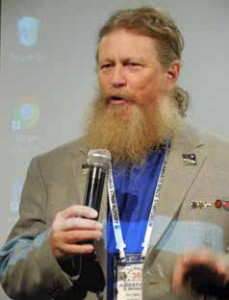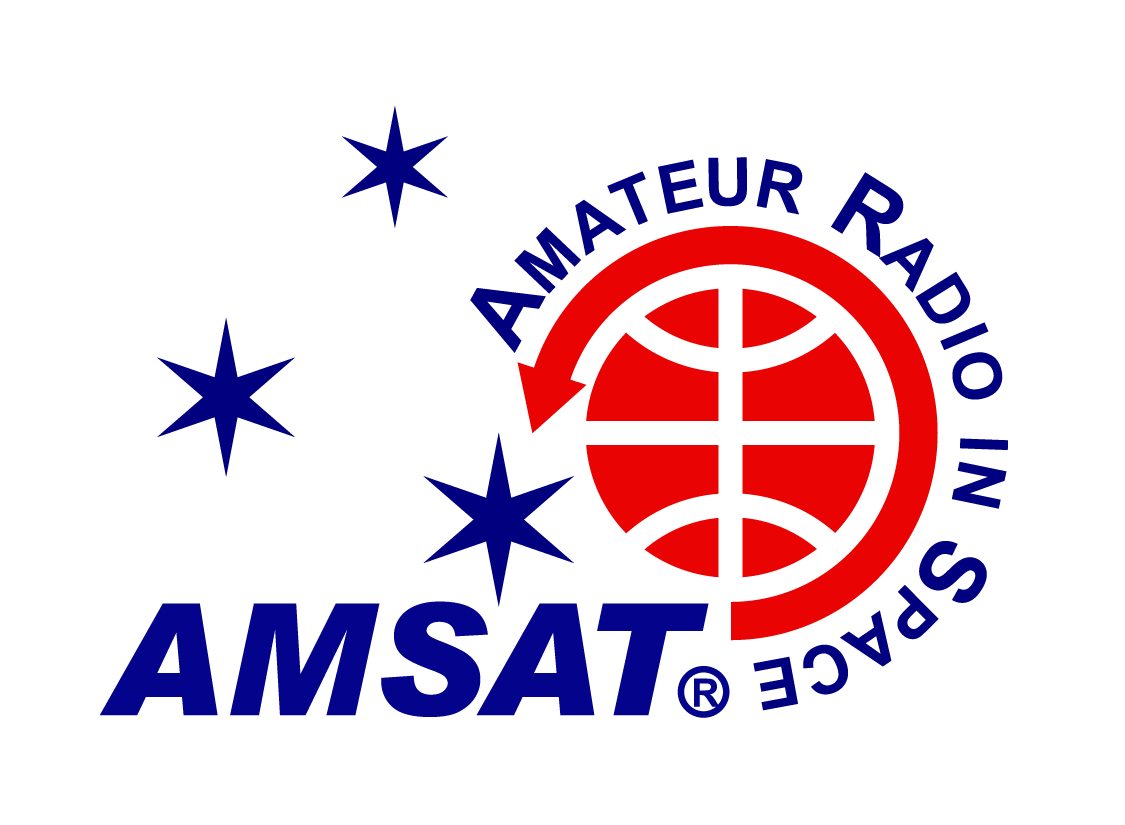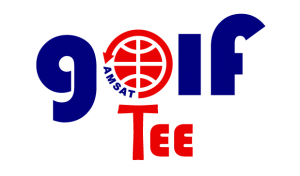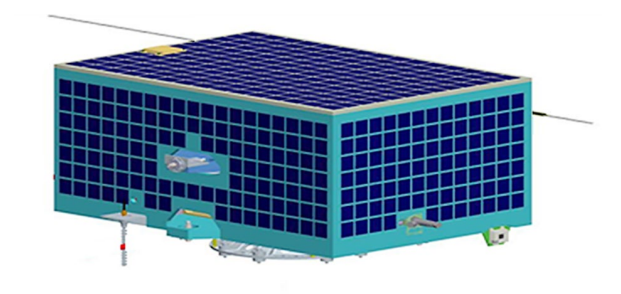AMSAT NEWS SERVICE
ANS-026
The AMSAT News Service bulletins are a free, weekly news and information service of AMSAT, The Radio Amateur Satellite Corporation. ANS publishes news related to Amateur Radio in space including reports on the activities of a worldwide group of Amateur Radio operators who share an active interest in designing, building, launching and communicating through analog and digital Amateur Radio satellites.
The news feed on https://amsat.org publishes news of Amateur Radio in space as soon as our volunteers can post it. Please send any amateur satellite news or reports to: ans-editor at amsat dot org. You can sign up for free e-mail delivery of the AMSAT News Service Bulletins via the ANS List; to join this list see: https://www.amsat.org/mailman/listinfo/ans
In this edition:
- HuskySat-1 With AMSAT VHF/UHF Linear Transponder Planned for Deployment Soon
- Celebration of 50th Anniversary of Australis-OSCAR 5
- ARRL to Argue for Continued Access to 3-GHz Spectrum as FCC Sets Comment Deadlines
- FO-99 (NEXUS) 1st Anniversary Report
- Amateurs in the News: “96-year-old Amateur Radio operator at Ontario Science Centre speaks with astronaut”
- Upcoming ARISS Contacts
- Upcoming AMSAT Events
- Upcoming Satellite Operations
- Satellite Shorts From All Over
AMSAT’s GOLF-TEE satellite recently reached a major milestone
when prototype boards transmitted telemetry for the first time.
Help support AMSAT’s path back to HEO by donating today!
https://www.amsat.org/donations/amsat-golf-program-donations/
HuskySat-1 With AMSAT VHF/UHF Linear Transponder Planned for Deployment Soon
The University of Washington’s HuskySat-1 3U cubesat was launched on the Northrop Grumman NG-12 Cygnus supply mission to the ISS on November 2. HuskySat-1 has remained stowed aboard Cygnus scheduled for deployment after the cargo ship unberths from the International Space Station. Unberthing is scheduled for 1435 UTC (9:35 am EST) on Jan 31 and will be covered live on NASA TV.
Within 24 hours after departure from the ISS, HuskySat-1 and SwampSat will be deployed into orbit. After deployment, HuskySat-1’s 1,200 bps BPSK beacon on 435.800 MHz should be active and decodable with the latest release of AMSAT’s FoxTelem software. HuskySat-1 is expected to run its primary mission before being turned over to AMSAT for amateur radio operation. HuskySat-1 features a 30 kHz wide 145 to 435 MHz linear transponder for SSB/CW.
HuskySat-1
———-
Uplink: 145.910 – 145.940 MHz LSB/CW
Downlink: 435.840 – 435.810 MHz USB/CW (inverting)
Telemetry: 435.800 MHz 1K2 bps BPSK
24049.00 MHz (U of Washington experimental downlink)
The latest version of FoxTelem software to decode the 1200 bps BPSK beacon is available at: https://www.amsat.org/tlm
The Fox-In-A-Box FoxTelem software has been updated for HuskySat-1 Operation at it’s download website: http://burnsfisher.com/AMSAT/FoxInABox
This release now contains the SD card image, FIAB-distro8-V1.08w.zip. This file, when unzipped and written to a 16Gb SD card will give you the latest software for FoxTelem and will run on a Raspberry Pi 4. This is an image of the same SD card that has been shipping from the AMSAT store for several weeks. (It should work on an 8Gb card as well with less room to spare of course).
Version 1.08w has a few fixes from the previous 1.08r which was the previous download version. Improvements to the decoder will capture data a bit better. Remember that the later 1.08 versions (including r and w) know how to switch bands between listening on VHF and UHF based on which of Fox and Husky satellites are overhead at the time.
(Fox-In-A-Box information thanks to Burns Fisher, WB1FJ)
The linear transponder and telemetry system carried aboard Fox-1E was designed for use in different CubeSats by merely adding an interface adapter for connection to the host bus. Noting the prevalence of CubeSats built and launched by universities and other organizations, AMSAT adopted a goal of “amateur radio in every CubeSat.” Interested CubeSat programs wanting to fly an amateur radio payload may partner with AMSAT to carry one of these modules on their spacecraft. By providing amateur radio capability, the CubeSat program gets a worldwide ground station network to receive their telemetry and experiment data while the amateur radio community gets a transponder to use in orbit.
Additional information is posted on the University of Washington Husky Satellite Lab pages:
https://sites.google.com/uw.edu/huskysatellitelab/huskysat-1
https://sites.google.com/uw.edu/huskysatellitelab/huskysat-1/com1
[ANS thanks the HuskySat-1 Team, AMSAT Engineering, AMSAT Operations, the Fox Telemetry Team, and NASA for the above information]
Need new satellite antennas? Purchase Arrows, Alaskan Arrows, and M2 LEO-Packs
from the AMSAT Store. When you purchase through AMSAT, a portion of the proceeds
goes towards Keeping Amateur Radio in Space.
https://amsat.org/product-category/hardware/
Celebration of 50th Anniversary of Australis-OSCAR 5
January 23, 2020 was the 50th anniversary of the launch of Australis-OSCAR 5. The first satellite built in Australia, arranging its launch was AMSAT’s first project following the creation of the organization in 1969.
AO-5 launched along with TIROS-M (later ITOS-1) on a Delta rocket from the west pad of Space Launch Complex 2 at Vandenberg Air Force Base.
Built by students at The University of Melbourne, Melbourne, Victoria, Australia. Battery powered, Australis-OSCAR 5 transmitted telemetry on both 2 meter (144.050 MHz at 50 mW) and 10 meter (29.450 MHz at 250 mW) bands that operated for 23 and 46 days respectively. Passive magnetic attitude stabilization was performed by carrying two bar magnets to align with the Earth’s magnetic field in order to provide a favorable antenna footprint. The University of Melbourne compiled tracking reports from hundreds of stations in 27 countries.
Australis-OSCAR 5 was the first amateur satellite that was remotely controlled. The control logic is a direct predecessor to the control systems used by AMSAT in AMSAT-OSCAR 6, AMSAT-OSCAR 7, and AMSAT-OSCAR 8.
Two of the builders of AO-5, Dr. Owen Mace and Richard Tonkin, spoke at the 2019 AMSAT Space Symposium this past October and participated in a panel on “The Foundations of AMSAT.” Video of the panel presentations can be viewed at https://tinyurl.com/ANS-026-AO-5
On January 22nd, Tonkin appeared on The Space Show Australia Summer Edition on 88.3 Southern FM in Victoria to discuss AO-5. The episode can be heard at https://tinyurl.com/ANS-026-SpaceShow
Mace and Tonkin have written a book about the story of AO-5. The second edition of the book was released in December. More information about the satellite and the book can be found at https://australis-oscar5.weebly.com/
A 50th anniversary celebration will be held on February 27th at the University of Melbourne.
[ANS thanks AMSAT for the above information]
The digital download version of the 2019 edition of
Getting Started with Amateur Satellites is now available
as a DRM-free PDF from the AMSAT Store. Get yours today!
https://tinyurl.com/ANS-237-Getting-Started
ARRL to Argue for Continued Access to 3-GHz Spectrum as FCC Sets Comment Deadlines
At its January meeting, the ARRL Board of Directors instructed the League’s FCC counsel to prepare a strong response to protect amateur access to spectrum in the 3 GHz range. In its Notice of Proposed Rulemaking (NPRM) in WT Docket 19-348, the FCC proposed to relocate all non-federal operations, including amateur uses, to spectrum outside the 3.3 – 3.55 GHz band. The Commission anticipates auctioning this spectrum to expand commercial use of 5G cellular and wireless broadband services, if agreement can be reached on relocation of — or sharing with — the federal incumbents that operate in the same band. Publication of the NPRM in the Federal Register on January 22 established deadlines of February 21 for comments and March 23 for reply comments.
The FCC has requested comment on the uses radio amateurs make of the spectrum and appropriate relocation options. Complicating matters is the fact that radio amateurs must consider the possibility that the immediately adjacent 3.1 – 3.3 GHz band is included in the spectrum that Congress has identified for similar study. FCC Commissioner Michael O’Rielly, in a December statement, referenced the fact that the lower band may also be considered for non-federal reallocation, potentially limiting relocation possibilities.
Amateurs make substantial use of the 3.3 – 3.5 GHz band that would be hard to replicate elsewhere, and they have filed more than 150 comments before the designated comment period even began. Among users looking at options are those who use this spectrum for Earth-Moon-Earth (moonbounce) communication, mesh networks, experiments with communication over long distances, radiosport, and amateur television. A portion of the band also is designated for use by amateur satellites in ITU Regions 2 and 3 (the Americas and Asia/Pacific).
A report is due by March 23 from the National Telecommunications and Information Administration (NTIA) evaluating the feasibility of having federal users share all or part of the 3.1 – 3.55 GHz band with commercial wireless services. This report is required by the Making Opportunities for Broadband Investment and Limiting Excessive and Needless Obstacles to Wireless (MOBILE NOW) Act. The results of the NTIA report will impact how much spectrum ultimately may be reallocated for auction to wireless providers.
ARRL urges amateurs who comment to inform the FCC about the uses they make of the 3 GHz spectrum. Short comments and longer statements may be filed electronically. Visit the FCC “How to Comment on FCC Proceedings” page for more information. Commenters should reference WT Docket 19-348.
Editor’s Note: As this rulemaking would delete the 3.4 – 3.41 GHz amateur satellite service band, AMSAT is also preparing comments to be filed on this matter. Continued access to microwave spectrum is crucial for GOLF and future AMSAT missions to HEO, GEO, and beyond.
[ANS thanks the ARRL for the above information]
FO-99 (NEXUS) 1st Anniversary Report
NEXUS, an amateur radio technology demonstration satellite was developed by Japan Amateur Satellite Association (JAMSAT) and NEXUS project team in Department of Aerospace Engineering, College of Science and Technology, Nihon University, Japan, and launched by Japanese Epsilon#4 rocket from the Uchinoura Space Center at JST 9:50:20, 18 January 2019.
We would like to express our deep appreciation to all concerned and report the results of the operation after the launch, i.e. one year’s operation from 18 January 2019 to 18 January 2020.
The comprehensive report of operations can be found at https://tinyurl.com/ANS-026-FO-99
[ANS thanks the NEXUS Project Team at Nihon University for the above information]
AMSAT, along with our ARISS partners, is developing an amateur radio package,
including two-way communication capability, to be carried on-board Gateway in
lunar orbit. Support AMSAT’s projects today at https://www.amsat.org/donate/
Amateurs in the News: “96-year-old Amateur Radio operator at Ontario Science Centre speaks with astronaut”
A successful International Space Station (ISS) contact was held on January 22 with participants at the Ontario Science Centre’s Amateur Radio station VE3OSC in Toronto, Ontario.
As described below this was no ordinary ARISS contact.
“Jean Moffet, VE3WAD, has been a volunteer at the VE3OSC station for more than 30 years. Having recently celebrated her 96th birthday, Jean indicated one of her bucket list items is to speak to an astronaut aboard the International Space Station (ISS). To honour her invaluable contribution, the Science Centre worked in partnership with the Amateur Radio on the International Space Station (ARISS) Canada to help Jean check this item off her list.”
The event was featured on Global News at 5:30 Toronto – in an interview with Anchor/Producer Broadcast Journalist Susan Hay – and on CTV News Toronto by Videojournalist Scott Lightfoot.
Nick Westoll of Global News wrote:
“Jean Moffett crossed an item off her bucket list on Wednesday by speaking with Commander Luca Parmitano, an Italian astronaut from the European Space Agency, aboard the International Space Station.
‘Commander Parmitano, I have two questions to ask you: Do you have an opinion about extraterrestrial life before being on the International Space (ISS) Station and has being on the ISS changed your views?’ she asked.
Moffett was asked how long she has been waiting to do this.
‘Since I was 60… I was an amateur radio operator and my voice was going up to satellites and I could hear the astronauts speaking, but I could never speak to them,’ she recalled. ‘I thought to myself, that’s my bucket wish’.”
Scott Lightfoot of CTV News wrote:
“Moffatt grew up in North Bay and moved to Toronto as a young girl with her family hoping that there would be opportunities for a girl interested in science and technology.
‘When we moved to Toronto I desperately wanted to go to university, but my mom and dad had bought a house, and there was just enough money for my brother to go to university.’
Undeterred, Moffatt said she took a course in Amateur Radio and shortly after, got her licence. More than 30 years ago, after retiring, and the death of her husband, Moffatt started volunteering
at the Ontario Science Centre, an endeavor she admits wasn’t successful at first.
‘I was working in the greenhouse, killing all the plants because I cannot keep plants alive’. Armed with her radio licence, she helped set up the centre’s first radio shack with the call sign VE3OSC.
The idea to connect the nonagenarian with the ISS came just after Moffatt’s 96th birthday.
‘She mentioned to me that one of the things she’s always wanted to do was talk to an astronaut’ Christine Pigeon, the volunteer coordinator at the Science Centre told CTV News Toronto. It all started with an e-mail, and three months later with the help of ham radio operators and NASA, Moffatt made her connection.”
Congratulations and Thank You!
Radio Amateurs of Canada would like to congratulate Jean Moffet, VE3WAD, on this significant achievement and thank everyone who was involved with this very special event. We hope to bring you additional information about this event in a future issue of The Canadian Amateur magazine.
We would especially like to thank Global News and CTV News for their coverage of this event.
For the full story and links to the quoted stories and videos, see https://tinyurl.com/ANS-026-RAC
[ANS thanks the Radio Amateurs of Canada for the above information]
Purchase AMSAT Gear on our Zazzle storefront.
25% of the purchase price of each product goes
towards Keeping Amateur Radio in Space
https://www.zazzle.com/amsat_gear
Upcoming ARISS Contacts
Agrupamento de Escolas Serafim Leite, São João da Madeira, Portugal, direct via CS2ASL
The ISS callsign is presently scheduled to be OR4ISS
The scheduled astronaut is Luca Parmitano KF5KDP
Contact is go for: Mon 2020-01-27 16:33:34 UTC 64 deg (***)
Primary School “Jovan Jovanović Zmaj“, Sremska Mitrovica, Serbia, direct via YU7BPQ
The ISS callsign is presently scheduled to be OR4ISS
The scheduled astronaut is Luca Parmitano KF5KDP
Contact is go for: Tue 2020-01-28 15:51:19 UTC 48 deg
Possible Russian supported contact with Ecuador, via TBD (***)
The ISS callsign is presently scheduled to be RSØISS (***)
The scheduled astronaut is Oleg Skripochka (***)
Contact possibly is go for Fri 2020-02-07 14:00 UTC (***)
The ARISS webpage is at https://www.ariss.org/
Note that there are links to other ARISS websites from this site.
The main page for Applying to Host a Scheduled Contact may be found at https://www.ariss.org/apply-to-host-an-ariss-contact.html
Note, all times are approximate. It is recommended that you do your own orbital prediction or start listening about 10 minutes before the listed time.
All dates and times listed follow International Standard ISO 8601 and time format YYYY-MM-DD HH:MM:SS
[ANS thanks Charlie Sulfana, AJ9N, ARISS Operations, for the above information]
Upcoming AMSAT Events
Want to see AMSAT in action or learn more about amateur radio in space?
AMSAT Ambassadors provide presentations, demonstrate communicating through amateur satellites, and host information tables at club meetings, hamfests, conventions, maker faires, and other events.
Current schedule:
- February 7-9, 2020, Hamcation, Orlando, FL
- February 14-15, 2020, Yuma Hamfest and ARRL Southwest Division Convention, Yuma, AZ
- February 15, 2020, Cabin Fever Reliever Hamfest, Saint Cloud, MN
- March 6, 2020, Irving Hamfest, Irving, TX
- March 14-15, 2020, Science City on University of Arizona, Tuscon, AZ
- March 21, 2020, Midwinter Madness Hamfest, Buffalo, MN
- March 21, 2020, Scottsdale Amateur Radio Club Hamfest, Scottsdale, AZ
- March 28, 2020, Tucson Spring Hamfest, Tucson, AZ
- March 29, 2020, Vienna Wireless Winterfest, Annandale, VA
- May 2, 2020, Cochise Amateur Radio Association Hamfest, Sierra Vista, AZ
- May 8-9, 2020 Prescott Hamfest, Prescott, AZ
- May 15-17, Hamvention, Xenia, OH
- June 12-13, 2020, Ham-Con, Plano, TX
A copy of the AMSAT hamfest brochure is available for download at https://tinyurl.com/ANS-026-Hamfest
This color brochure is designed to be printed double-sided and folded into a tri-fold handout.
To include your upcoming AMSAT presentation and/or demonstration, please send an email to ambassadors (at) amsat (dot) org.
[ANS thanks Robert Bankston, KE4AL, AMSAT VP – User Services, for the above information]
Upcoming Satellite Operations
Satellite Shorts
Feb 15 CN78 AD0DX FM and Linear (Twitter @ad0dx)
Mar 14-15 DN26/36 KC7JPC Linears (and possibly FM)
New Orleans, LA (EL49, EL58, EM59, EM40, EM50, EM60) January 14 – February 1, 2020
Adam, KC3OBS, will be roving EM40, EM50, EL49, EL59, January 14th – Feb 1st. In between, Adam will be in EM60 January 29th. Adam will announce passes and updates on Twitter: https://twitter.com/sparky_husky
Labrador (GO11 +) January 19-27, 2019
Chris VE3FU, Dave VE9CB, and Frank VO1HP will be active as VO2AC in the 2020 CQ 160 CW contest, January 24-26, from Point Armour Lighthouse, in Labrador. If time permits before the contest, they may be active on FM satellites from GO11 as VO2AC or VO2AAA.
Depending on weather and timing of passes, you might catch them on FM satellites as they make their way from FO93 to GO-11, passing through FO92, GO02, GO13, GO12, and GO22 along the way, but no promises. They will also make the reverse trek on January 27.
Montserrat (FK86) January 26 – February 2, 2020
Mel, W8MV, will be in Montserrat 26 January until 2 February, operating under the call sign VP2MCV on FM Sats. QSL via LOTW.
#SnowBirdRove (EL79) – February 1-29, 2020
Joe, KE9AJ, will cross the border into Florida, seeking climatical asylum in EL79 for the entire month of February. Since he will be there for an extended period, with both FM and linear gear, keep an eye on Joe’s Twitter feed for specific pass announcements: https://twitter.com/KE9AJ
There is a possibility that Joe may have to make a pit stop in EM54 and EM53 on his way down South on February 1st. Monitor Twitter for updates.
Antigua (FK97) February 2 – 9, 2020
Mel, W8MV, will be in Antigua 2-9 February. Mel is waiting for his operating license. Will update as soon as it arrives. FM only. QSL via LOTW
Isla Perez, Mexico (EL52, EL50, EL51) February 11 – 17, 2020
Members of Radio Club Puebla DX will be active as 6F3A from Isla Perez, Mexico, between February 11-17. The operators mentioned are Patricia/XE1SPM (Team Leader), Ismael/XE1AY, Rey/XE1SRD and Ricardo/XE1SY. Activity will be on 80/40/20/17/15/12/10/6 meters, and include the ARRL DX CW Contest (February 15-16). QSL via XE1SY. Ismael, XE1AY, reports that he is doing CW and the satellites, and will also TX from EL50 and XE1AY/mm from EL51.
Big Bend National Park (DL88) March 16-17, 2020
Ron AD0DX, Doug N6UA, and Josh W3ARD will operate from Big Bend National Park to put grid DL88 on the air. Details will be added here, as they come available, but you are more than welcome to keep an eye on their individual Twitter feeds: https://twitter.com/ad0dx, https://twitter.com/dtabor, and https://twitter.com/W3ARDstroke5
Please submit any additions or corrections to ke4al (at) amsat.org
[ANS thanks Robert Bankston, KE4AL, AMSAT VP – User Services, for the above information]
Satellite Shorts From All Over
- Want to make a satgate out of your Raspberry Pi? Check out how at https://tinyurl.com/ANS-026-SatGate
- CQ operators of PO-101! If you have successfully operated PO-101, you can request a QSL card from the PO-101 team! Just fill in the necessary info and they will send it to you as a token of appreciation for using PO-101 https://tinyurl.com/ANS-026-PO-101
- Peter Goodhall, 2M0SQL, notes that PSK31 transponders on NO-84 and NO-104 are underutilized. If you are looking to try something new this week, why not give it a shot? Uplinks are on 10m and downlinks are on 70cm. More information at http://aprs.org/psat.html and http://aprs.org/psat2.html
- Justin McAllister, K5EM, reports that he updated his SatMatch tool with a new advanced search user interface. He has also made the tool more mobile responsive. Check it out at https://www.satmatch.com/
- FO-29 remains operational. However, the batteries on the 23 year old satellite cannot maintain a safe voltage throughout an entire eclipse during this point in its orbit with lengthy eclipse periods. The satellite is commanded on over Japan periodically and will remain active after the command until the battery voltage drops below a set threshold, at which point it is automatically switched off to preserve the batteries.Upcoming command times follow:
2/1 06:00
2/2 06:50
2/8 04:50 15:00
2/9 03:55 15:50
2/11 03:50 05:35
2/23 03:20 05:05
2/24 04:10 05:55 14:20
3/1 04:00 05:40 15:55
3/2 04:45 14:55
- Scott Chapman, K4KDR, reports that AISAT-1 is active again on 2m packet. He reports that the best success at digipeating is achieved using NFM and Doppler correction if possible. iGates should be proxied through KE6BLR to correct the satellite’s malformed packets so they are visible to the greater APRS-IS network.
- Scott further reports that Taurus-1 remains active. Taurus-1 carries a VHF FM to UHF Codec2 transponder. For more information about this unique analog uplink, digital downlink system, see N8HM’s AMSAT Journal article / Symposium paper about LO-90 at https://tinyurl.com/ANS-026-LO-90
- Operation via Taurus-1 is similar to LO-90, except with an uplink of 145.840 MHz and a downlink of 435.840 MHz. For more information, see https://www.amsat.org/pipermail/amsat-bb/2019-September/074905.html
- Finally, Scott also reports, that despite the telemetry from Duchifat-3 reporting the FM transponder to be on, nothing is heard when uplinking at 145.970 MHz. We await further information about the status of this satellite’s FM transponder.
- Hackaday featured an article entitled “Lessons Learned from a CubeSat Postmortem” regarding problems encountered by KRAKsat, a 1U CubeSat deployed from the ISS in June 2019. Read the article at https://tinyurl.com/ANS-026-Hackaday
[ANS thanks everyone for the above information]
In addition to regular membership, AMSAT offers membership in the President’s Club. Members of the President’s Club, as sustaining donors to AMSAT Project Funds, will be eligible to receive additional benefits. Application forms are available from the AMSAT Office.
Primary and secondary school students are eligible for membership at one-half the standard yearly rate. Post-secondary school students enrolled in at least half time status shall be eligible for the student rate for a maximum of 6 post-secondary years in this status. Contact Martha at the AMSAT Office for additional student membership information.
73 and remember to help Keep Amateur Radio In Space,
This week’s ANS Editor,
Paul Stoetzer, N8HM
n8hm at amsat dot org



